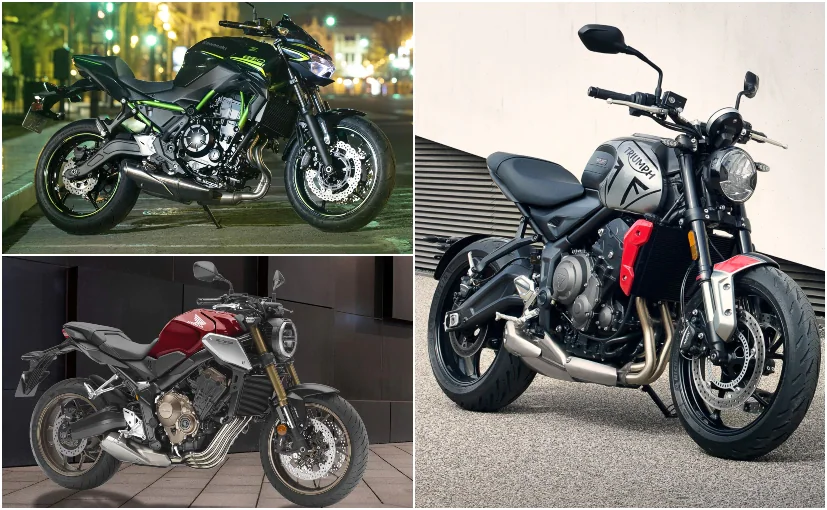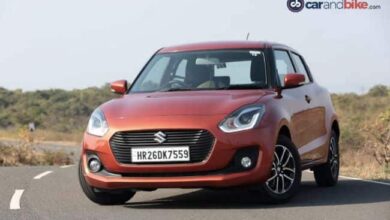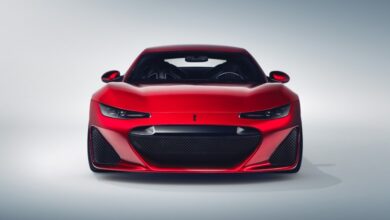Triumph Trident 660 vs Honda CB650R vs Kawasaki Z650: Spec Comparison

[ad_1]
The Triumph Trident 660 has been finally launched in India at a price of ₹ 6.95 lakh (ex-showroom), and looks like an interesting choice for those looking for some middleweight motorcycling action. With the arrival of the Trident, customers can now choose from a three-cylinder motor, parallel-twin cylinder motor – Kawasaki Z650 – as well as the in-line four-cylinder, powered Honda CB650R. So how does each of these motorcycles compare against each other on paper? Let’s take a quick look.
Also Read: Triumph Trident 660 Launched In India
The Triumph Trident 660 gets a 660 cc triple-cylinder motor with 80 bhp and 64 Nm that promises excellent tractability
Engine
The Triumph Trident 660 follows the three-cylinder format of Triumph’s naked motorcycles. The 660 cc is all-new and developed from the ground up for friendly power delivery. The engine belts out 80 bhp at 10,250 rpm and 64 Nm of peak torque at 6250 rpm, while paired with a 6-speed gearbox with a slip/assist clutch. Triumph says that up to 90 per cent of torque is available throughout the rev range, in order to offer spirited performance to new riders without power feeling overwhelming.
| Specifications | Triumph Trident 660 | Honda CB650R | Kawasaki Z650 |
|---|---|---|---|
| Engine | 660 cc 3-Cyl | 648.72 cc 4-Cyl | 649 cc 2-Cyl |
| Max Power | 80 bhp @ 10,250 rpm | 86 bhp @ 12,000 rpm | 67 bhp @ 8000 rpm |
| Peak Torque | 64 Nm @ 6250 rpm | 57.5 Nm @ 8500 rpm | 64 Nm @ 6700 rpm |
| Transmission | 6-speed MT | 6-speed MT | 6-speed MT |
In contrast, the recently launched Honda CB650R is the most powerful option in the segment with the 648.7 cc in-line four-cylinder motor that belts out 86 bhp at 12,000 rpm and 57.5 Nm of peak torque at 8500 rpm. The motor also comes with a 6-speed gearbox as well as a slip and assist clutch. The CB650R should live up to the big bike experience with ample traceability, but it will be the Trident that will be more rider-friendly, given that power peaks at a lower rpm.
Coming to the least powerful offering in the segment, the Kawasaki Z650 draws power from the tried-and-tested, and extremely likeable 649 cc liquid-cooled twin-cylinder engine. The motor develops 67 bhp at 8000 rpm and 64 Nm of peak torque at 6700 rpm. The motor comes mated to a 6-speed gearbox. The power and torque figures are spread across the rev range, which makes the Z650 an extremely rider-friendly motorcycle for the city and highway runs.
Also Read: 2021 Honda CB650R, CBR650R Launched In India

The Honda CB650R is the most powerful motorcycle in this comparison with a four-cylinder heart but is also 18 kg heavier than the Trident
Chassis
The new Triumph Trident 660 uses a tubular steel frame with a steel swingarm that helps the middleweight naked keep its kerb weight at 189 kg. The bike is equipped with top-spec components including 41 mm Showa USD forks at the front and a pre-load adjustable monoshock at the rear. Braking performance comes from the Nissin-sourced axially-mounted dual-piston callipers with 310 mm discs at the front and a single 255 mm disc at the rear.
In comparison, the Honda CB650R gets a steel chassis with an aluminium swingarm. The bike though is a good 18 kg heavier than the Trident 660. The streetfighter uses Showa Separate Function-Big Piston (SSF-BP) USD front forks and an adjustable monoshock at the rear, while braking power comes from the dual radial-mounted four-piston brake callipers with 310 mm dual front discs.
The Kawasaki Z650 uses a trellis high-tensile strength steel frame underneath with a kerb weight of 191 kg, which makes it only marginally heavier than the Trident. The motorcycle uses 41 mm telescopic forks at the front and a pre-load adjustable rear monoshock. Braking duties are handled by dual semi-floating 300 mm petal discs at the front and a 220 mm single disc at the rear.
In terms of seat height, the Triumph middleweight naked measures 805 mm, which is a little lower than the Honda’s 810 mm. However, it is the Kawasaki that gets the lowest of the three at 790 mm. All three motorcycle offer an upright riding posture. However, the Z650 is known to be slightly more aggressive than the other two.
Also Read: Kawasaki Z650 BS6 Launched In India

The Kawasaki Z650 offers an agile frame and a quick motor and is free from most electronic interventions barring dual-channel ABS
Features
The Triumph Trident 660 is the newest of the lot here not just in India but globally too. The is packed to the brim with features and comes with all-LED lighting, dual-channel ABS, slip and assist clutch, traction control, dual riding modes – Road and Rain, and self-cancelling indicators. A TFT LCD instrument console gives access to all controls via the switchgear on the handlebar.
In contrast, the retro-cool Honda CB650R is equally loaded and gets full-LED lighting, dual-channel ABS, slip/assist clutch, Honda Selectable Torque Control (HSTC) or traction control. There’s also an LCD display with a negative backlit that looks functional and packs plenty of information.
The Kawasaki Z650 gets quite basic compared to its rivals when it comes to the feature front. There are no riding modes or traction control on offer, but it does come with LED lighting and a digital TFT instrument console that’s a big jump from the older unit and also gets smartphone connectivity via Bluetooth as part of the standard package.
Also Read: Triumph Trident 660: Everything You Need To Know

The Trident 660 looks like an all-rounder compared to its rivals in the segment with its smart styling, extensive list of features and a power-packed motor
Price
The Triumph Trident 660 has been launched at a sweet price of ₹ 6.95 lakh (ex-showroom, India). This makes the motorcycle the brand’s most affordable offering in the country and enough premium for those looking to graduate to a “big bike.” In contrast, the Kawasaki Z650 remains the most affordable here priced at ₹ 6.18 lakh (ex-showroom), but does miss out on quite a bit when compared to the Triumph. It also needs to be noted that the Z650 is well over the halfway mark in its lifecycle when compared to the Trident.
0 Comments
This brings us to the most expensive offering in this comparison – the Honda CB650R. The neo-sports cafe-style motorcycle commands a price of ₹ 8.67 lakh (ex-showroom), which makes it a good ₹ 1.72 lakh more expensive than the Triumph. At that price, there are plenty of higher displacement options to consider, which makes the Honda an extremely expensive proposition.
For the latest auto news and reviews, follow carandbike.com on Twitter, Facebook, and subscribe to our YouTube channel.
[ad_2]
Source link



